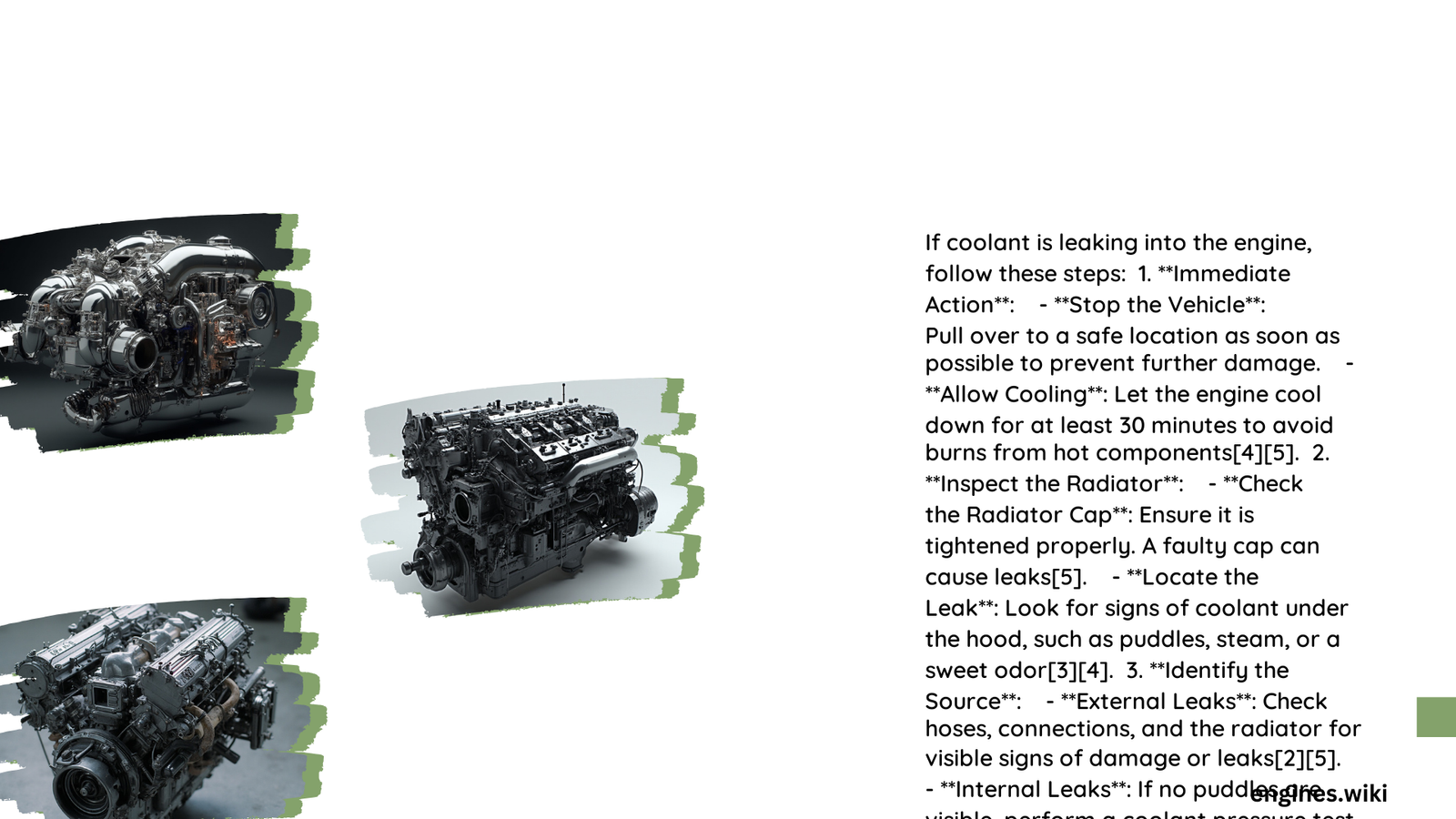Coolant leaking into an engine can cause catastrophic damage if not addressed immediately. When coolant infiltrates engine components, it can lead to rapid deterioration of internal parts, potential complete engine failure, and expensive repairs. Understanding the precise steps to diagnose, stop, and repair coolant leaks is crucial for preventing long-term vehicle damage and maintaining optimal engine performance.
What Causes Coolant to Leak into Engine?
How to Identify Coolant Leak Sources?
Coolant leaks can originate from multiple critical engine components:
| Component | Potential Leak Indicators | Severity |
|---|---|---|
| Head Gasket | White smoke, milky oil, overheating | High |
| Radiator | Visible puddles, low coolant levels | Medium |
| Water Pump | Coolant residue, squealing noise | Medium |
| Hoses | Visible cracks, wet spots | Low |
What Are Immediate Warning Signs?
Recognizing early warning signs of coolant leakage is critical:
- Visual Indicators:
- Bright-colored fluid under vehicle
- Steam from engine compartment
-
Puddles of green, orange, or pink liquid
-
Performance Symptoms:
- Rapid temperature gauge fluctuations
- Reduced engine performance
- Unusual sweet smell near engine
How to Diagnose Coolant Leak?

Can Pressure Testing Reveal Leak Location?
Pressure testing provides a systematic approach to identifying coolant leaks:
- Preparation:
- Ensure engine is completely cool
- Remove radiator cap carefully
-
Connect pressure testing kit
-
Testing Process:
- Pump system to recommended pressure
- Observe pressure gauge stability
- Inspect for pressure drops indicating leak
What Diagnostic Tools Help?
Specialized diagnostic techniques include:
- Fluorescent dye testing
- UV light inspection
- Compression tests
- Borescope engine examination
How to Prevent Further Engine Damage?
What Immediate Actions Protect Engine?
Critical steps to minimize potential damage:
- Stop driving immediately
- Allow engine to cool completely
- Check coolant levels
- Do not attempt to restart without professional assessment
Can Small Leaks Be Temporarily Repaired?
Temporary solutions include:
- Commercial radiator sealants
- Coolant stop-leak products
- Silicone tape for minor hose leaks
What Are Repair Cost Considerations?
How Expensive Are Coolant Leak Repairs?
Repair costs vary significantly:
| Repair Type | Estimated Cost Range |
|---|---|
| Minor Leak Repair | $100 – $500 |
| Head Gasket Replacement | $1,500 – $3,500 |
| Complete Engine Replacement | $4,000 – $8,000 |
Professional Recommendations
When Should You Seek Expert Help?
Consult professional mechanics if:
– Leak persists after initial diagnostics
– Complex engine components are involved
– Performance issues continue
– Repair requires specialized tools
How Often Should Cooling System Be Maintained?
Recommended maintenance schedule:
– Annual cooling system inspection
– Coolant flush every 30,000 miles
– Regular pressure testing
– Comprehensive system evaluation
Technical Insights
Coolant leaks represent more than simple fluid loss—they signal potential systemic failures within your vehicle’s most complex mechanical system. Proactive diagnosis, immediate intervention, and professional assessment can prevent catastrophic engine damage.
Pro Tip: Never ignore even minor coolant leaks, as they can rapidly escalate into major mechanical failures.
Final Technical Recommendation
Invest in routine cooling system maintenance and address any anomalies promptly to ensure long-term engine health and vehicle reliability.
References:
1. SAE International Cooling System Guidelines
2. ASE Automotive Repair Manual
3. Society of Automotive Engineers Technical Publications
